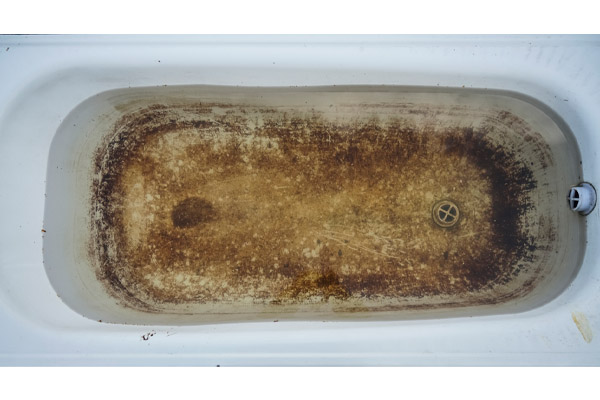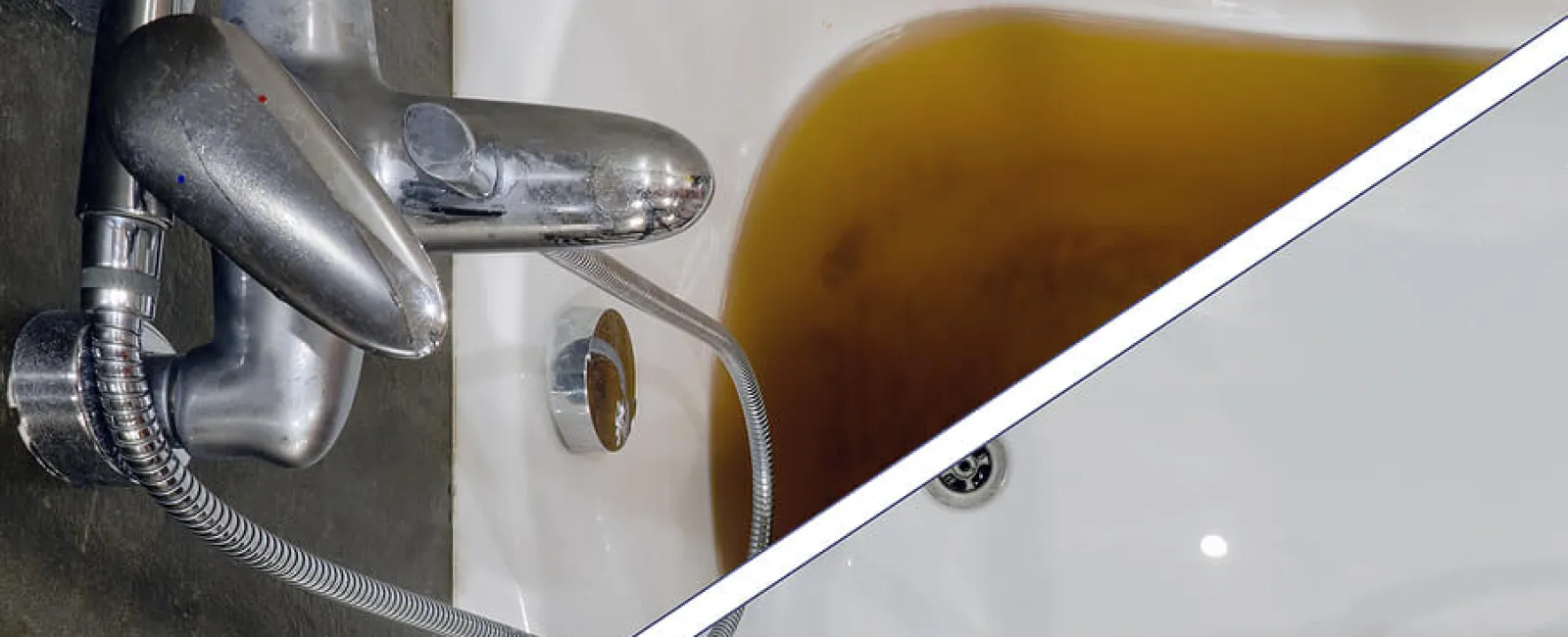Examining the Phenomenon of Effluent Rising Through the Bathtub
Examining the Phenomenon of Effluent Rising Through the Bathtub
Blog Article
How do you actually feel in relation to Why is Sewage Backing Up Into My Bathtub??

Sewage back-up in the bath tub can be an upsetting and unhygienic issue for any kind of property owner. Not only is it inconvenient, but it additionally postures serious health dangers and shows underlying issues with the plumbing system. Recognizing why sewer is coming up with the bath tub is vital for taking proper activity to deal with the issue successfully.
Intro to the Problem
Comprehending the Problem
When sewage draws back up right into the bathtub, it's a clear indicator of a trouble with the drain system. The wastewater that should be moving away from your home is instead locating its back into your space, which can result in significant damages and health hazards.
Potential Reasons
Several variables can contribute to sewer backup in the tub. From obstructions in the sewage system line to problems with the plumbing infrastructure, determining the root cause is important for locating an option.
Usual Factors for Sewer Back-up
Blockages in the Drain Line
One of the most common causes of sewage backup is a clog in the drain line. This can occur because of the build-up of debris, oil, or foreign things in the pipes, preventing proper circulation and causing sewage to support right into your tub.
Tree Root Invasion
Tree origins seeking dampness and nutrients can infiltrate drain lines with small fractures or joints. Gradually, these origins can grow and increase, causing significant damages to the pipelines and bring about sewage back-up problems.
Aging Framework
Older homes might have dated plumbing systems that are a lot more prone to deterioration, cracks, and wear and tear. As pipelines age, they end up being more prone to leakages and obstructions, enhancing the likelihood of sewage backup events.
Heavy Rainfall or Flooding
During periods of heavy rainfall or flooding, the sewer system may become overloaded with excess water, causing back-ups and overflows. This can lead to sewer supporting into bath tubs and other fixtures inside the home.
Wellness Dangers Connected With Sewage Back-up
Contamination of Water System
Sewage backup can infect the water supply in your house, positioning a severe health danger to you and your family members. Direct exposure to polluted water can lead to gastrointestinal problems, skin infections, and other diseases.
Spread of Disease
Sewage consists of harmful germs, viruses, and parasites that can trigger a series of diseases, including liver disease, cholera, and gastroenteritis. Entering contact with sewage or polluted surface areas places you in danger of infection.
Mold Development
Moisture from sewer back-up can create optimal conditions for mold and mildew development in your home. Mold and mildew spores can worsen breathing problems and cause allergic reactions in sensitive people, making timely clean-up vital.
Indications of Sewage Backup
Foul Odors
Undesirable smells rising from drains or components, specifically in the shower room, might indicate sewer backup concerns. These odors are often strong and relentless, signaling a trouble that requires instant focus.
Slow Draining Fixtures
Tubs, sinks, and commodes that drain gradually or otherwise in all could be experiencing sewer backup. If multiple components are impacted concurrently, it's likely that the problem originates from a typical point, such as the primary sewer line.
Gurgling Sounds
Odd gurgling or gurgling sounds coming from drains when water is running in other places in the house are indicative of air trapped in the plumbing system. This air buildup can result from sewage back-up and should be explored promptly.
Immediate Actions to Take
Switching Off Water
In the event of sewage backup, it's important to shut off the water to stop further contamination and damages. Find the major water shutoff valve in your house and closed it off until the concern can be settled.
Contacting a Professional Plumber
Dealing with sewage backup is not a do it yourself work. Call a licensed plumber with experience in handling sewage-related issues to evaluate the scenario and perform required fixings or cleanups.
Preventing Contact with Contaminated Water
Till the sewage back-up is solved, avoid contact with contaminated water to stop the spread of microorganisms and virus. Use safety gear if you need to remain in the affected location and clean your hands completely later.
Safety nets
Routine Upkeep of Sewer Lines
Arrange normal examinations and maintenance of your sewage system lines to recognize and resolve potential concerns before they intensify into significant problems. This can include cleaning out debris, checking for tree origin invasion, and repairing any kind of damaged pipes.
Setting Up Bayou Valves
Consider mounting backwater shutoffs in your plumbing system to prevent sewage from receding into your home during durations of heavy rainfall or flooding. These valves immediately close when water starts backing up, shielding your residential or commercial property from contamination.
Proper Disposal of Family Waste
Stay clear of flushing anything other than toilet tissue and human waste down the bathroom to stop blockages and clogs in the sewer line. Dispose of oil, oil, and various other house chemicals properly to lessen the danger of plumbing issues.
Cleaning Up After Sewer Back-up
Sanitation Procedures
Extensively disinfect and sterilize impacted locations after sewage backup to remove unsafe germs and avoid mold development. Use suitable cleansing items and protective equipment to guarantee risk-free and efficient cleanup.
Repair of Affected Areas
Fix any kind of damages to flooring, walls, or fixtures triggered by sewage backup. Depending on the extent of the damages, you may require to replace carpeting, drywall, or other products to recover your home to its pre-loss problem.
Why Is Water Backing Up in My Bathtub When I Flush My Toilet?
What to do about a sewer line clog
First, don’t bother with plunging. No amount of plunging will dislodge the clog in a sewer line. The clog is too far away. Plungers are for clogs in the toilet itself, not the sewer line. Plus, the most likely causes of a sewer clog are:
Tree roots Flushed toys or feminine products Grease buildup Those items don’t move easily. And in the case of tree roots, the roots need to be cut out of the pipe and the pipe will need to be repaired.
You’ll need a closet auger. A closet auger is a type of plumber’s snake with a protective cover to keep from scratching the delicate porcelain toilet. If the clog is further down, you may need to remove the toilet or use one of your cleanouts to get to the clog.
We also recommend doing a video inspection of the drain to ensure that the cause of the clog has been completely removed. Otherwise, you could have the same problem again in a few days or weeks.
https://mspplumbingheatingair.com/blog/why-is-water-backing-up-in-my-bathtub-when-i-flush-my-toilet

We were made aware of that editorial about Why sewage is coming up through your bathtub through a pal on another web property. Do you know another person who is enthusiastic about the niche? Take a moment to promote it. Kudos for your time. Revisit us soon.
Request An Estimate
Report this page